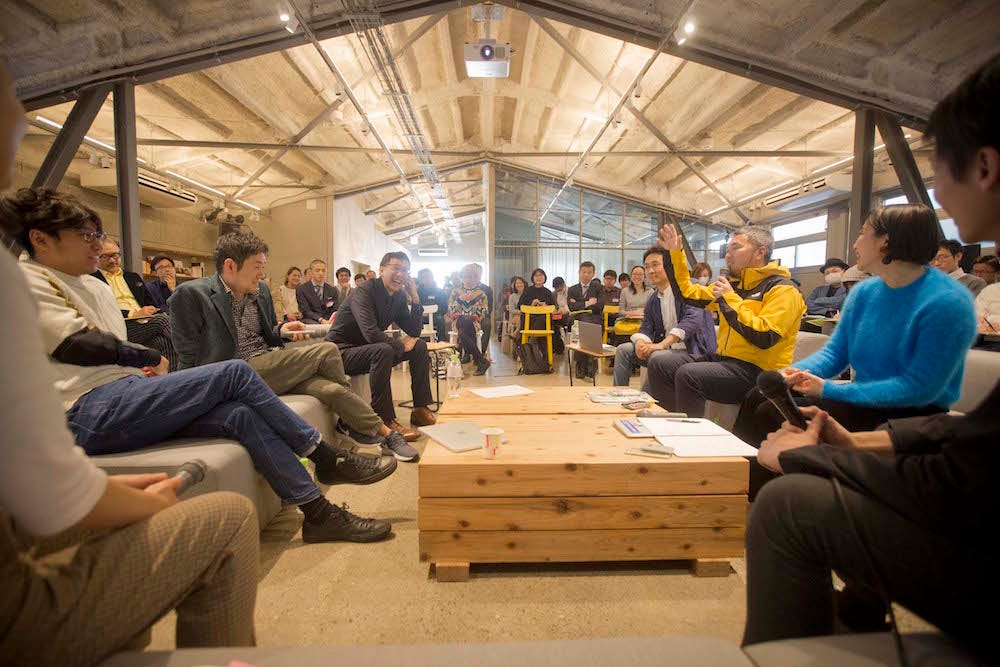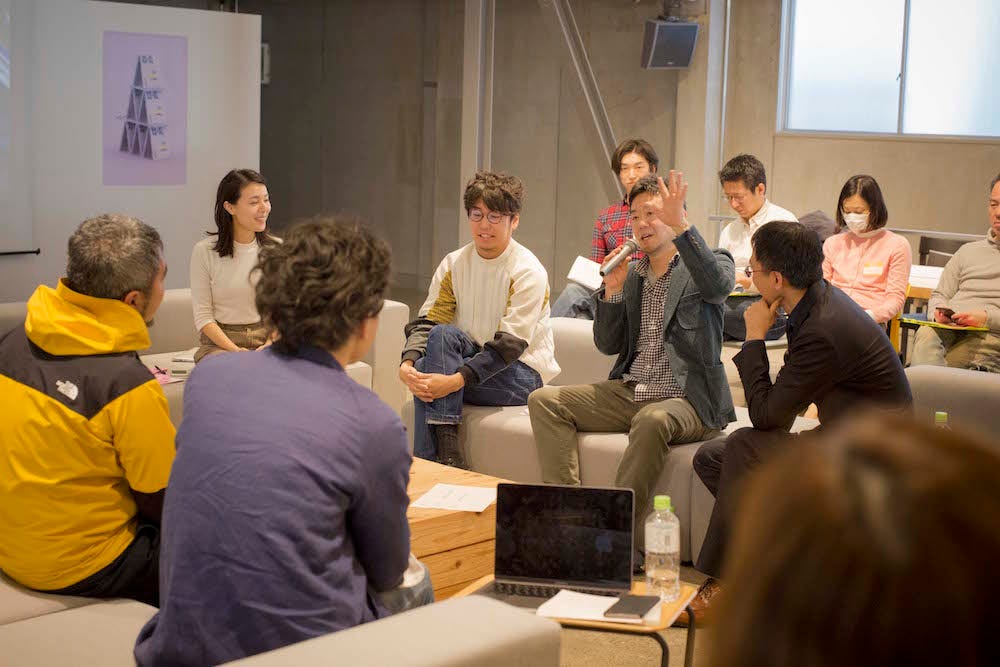In March 2018, some of my colleagues and I had an opportunity to invite some of the most prominent practitioners in the field of urban community planning in Japan to our one-day event “Hack my City”.
The event was hosted by Shibuya Hack Project and the theme of the day was “from XS to XL — the methodology of urban development to think across the scales”.
Shibuya Hack Project is a bottom-up urban initiative in Shibuya that uses the methodology of tactical urbanism, encouraging the citizens to “own” the city and use the urban space freely. This is an attempt to give a long-term effect ( XL) in a short-term small practice (XS).
The project has been doing various activities since 2013,from making street furniture to organising an art exhibition ; however, there has been a clear distance between it and the mainstream urban regeneration that is happening in Shibuya.
Thus, we wanted to tackle the question of how we can connect the small-scaled bottom-up citizen initiatives with large-scale urban developments, which tend to leave the grassroots initiatives behind. It also involves the question of how we can make sense of the distance between our everyday lives and actions and the meta-scaled narrative and representation of Tokyo.
This post briefly covers the discussion we had that day.
※This post is based on: https://loftwork.com/jp/event/20180313_hmc_report
 https://loftwork.com/jp/event/20180313_hmc_report
https://loftwork.com/jp/event/20180313_hmc_report
What if there is the opposite to “broken window theory?”
I know that “connecting various urban practices across scales” sounds a bit ambitious , so let me break it down a little bit more to show you what we had in mind.
We started from the image of “*Powers of Ten*” , a film by Charles and Ray Eames. It illustrates the world — from everyday picnics to cosmic mystery and even to the level of a carbon atom — as an arena of continuity. It is a work that travels from the viewpoint of XL to that of XS, and has exponential powers to emphasize the importance of scale.
Another example; the broken windows theory was proposed by James Q. Wilson and George Kelling in 1982. Iit is the theory that uses broken windows as a metaphor/indicator showing disorder and the decay of neighborhoods. If there is one broken window in the town, this will lead to another being broken and another, which ultimately leads to arise in the crime rate of the town as a whole, and finally linking to urban disorder and incivility within a community.
The broken window theory is a negative example, but it certainly highlights the importance of scales — the world as an arena of continuity. What if we can design the opposite phenomenon to the broken window theory by connecting various urban practices to achieve abigger effect?
Below are some of the quotes from the guest speakers on this topic.
Citizens who use and update their cities — Yukako Ishikawa
Yukako Ishikawa, a director of Shibuya Hack Project, said that the “broken window theory” has a lot in common with tactical urbanism , which is the approach that this project is taking.
Our motivation is to encourage the XS size bottom-up approach by citizens, who are often disconnected by large scale urban development by the administration or private companies. We need a common language to find a familiar arena between the two different scales.

Citizens’ everyday lives (XS) in the urban community — Jun Aoki (Nest.inc)
Mr. Aoki, a famous landlord in Japan, believes that the smallest unit of our urban space is the residents’ everyday lives and their living space. In Aoki’s rental housings, the residents can make home gardens and organize events by themselves or create shared offices and customize their homes as they want — something that is quite rare in Japan.
He has also devoted himself to revitalizing Minami-Ikebukuro Park, which was re-opened in spring 2016 after five years of renovations. This park is now a popular hangout and lunch spot for locals with various activities such as Marche, film screenings, and weddings.
The place of living should be connected to a community and its surroundings — we can scale up from XS to S by letting people have freedom to use their living space and sort of encroach towards their urban surroundings.
 https://loftwork.com/jp/event/20180313_hmc_report
https://loftwork.com/jp/event/20180313_hmc_report
“Urban management” as a way to connect the various urban scales — Atsumi Hayashi (Tokyo R Real Estate)
Mr. Hayashi, co-chairman of Tokyo R Real Estate and the architecture firm SPEAC argues the importance of applying the concept of management into cities as a way to include the industrial strategies and human resources and other manageable factors to establish a creative place in microscopic thinking.
It is important to have strategies and management skills to concern the large-scaled regional socio-economic sustainability while putting people first and believing in the power of smallness led by the citizens.
 https://loftwork.com/jp/event/20180313_hmc_report
https://loftwork.com/jp/event/20180313_hmc_report
Workshop
The event also involved fieldwork to the riverside in Shibuya and a subsequent workshop. This served to re-discover regional assets from the viewpoint of individuals and to think about their own public space, namely “personal stalls”.
 https://loftwork.com/jp/event/20180313_hmc_report3
https://loftwork.com/jp/event/20180313_hmc_report3
If you want to know more about the event, check out the event reports (available only in Japanese).
Part1: https://loftwork.com/jp/event/20180313_hmc_report
Part2: https://loftwork.com/jp/event/20180313_hmc_report2
Part3: https://loftwork.com/jp/event/20180313_hmc_report3



